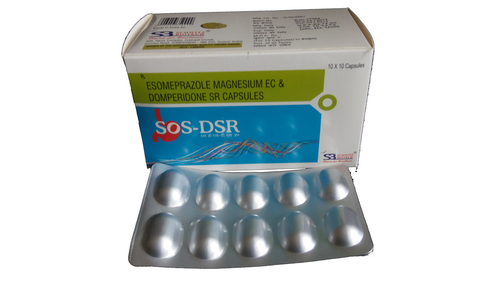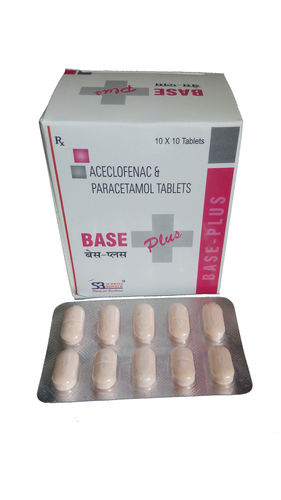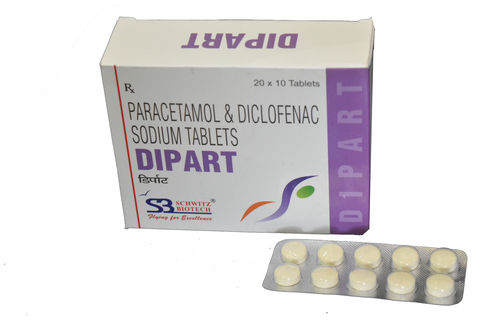
SOS-DSR Capsule (Esomperazole 40 mg + Domperidone 30 mg Capsules)
100 INR/Box
Product Details:
- Product Type General Medicines
- Physical Form Capsules
- Treatments & Functions Other Functions
- Age Group Adult
- Packaging Carton
- Storage Instructions Dry Place
- Click to View more
X
SOS-DSR Capsule (Esomperazole 40 mg + Domperidone 30 mg Capsules) Price And Quantity
- 100 , , Box
- 100 INR/Box
SOS-DSR Capsule (Esomperazole 40 mg + Domperidone 30 mg Capsules) Product Specifications
- Dry Place
- Carton
- General Medicines
- Capsules
- Adult
- Other Functions
SOS-DSR Capsule (Esomperazole 40 mg + Domperidone 30 mg Capsules) Trade Information
- Mundra and Mumbai
- Cash in Advance (CID), Cash Advance (CA)
- 100 , , Box Per Day
- 3-30 Hours
- Yes
- Sample costs shipping and taxes has to be paid by the buyer
- Box, carton
- Australia, North America, Eastern Europe, Middle East, Africa, Western Europe, Central America, South America, Asia
- All India
Product Description
Indications and Usage: Acid peptic disease both active disease treatment and for maintenance therapy. Gastroesophageal reflux disease and erosive esophagitis. Hypersecretory states like Z.E. syndrome etc.Mechanism of Actions: Domperidone is a peripheral dopamine D2-receptor antagonist, which regulates the motility of gastric and small intestinal smooth muscle. It increases theduration of antral and duodenal contractions and also LES resting pressure, thus stimulating gastric emptying and is also effective in relief of symptoms of refluxesophagitis. Antiemetic activity is due to the blockade of dopamine receptors in the chemoreceptor trigger zone. Esmoprazole inhibits the secretion of gastricacid by irreversibly blocking the enzyme system of H+/K+ ATPase of the gastric parietal cell. It is activated at an acidic pH to a sulphenamide derivative thatbinds irreversibly to H+/K+ ATPase, an enzyme system found at the secretory surface of parietal cells. It thereby inhibits the final transport of hydrogen ions (viaexchange with K ions) into the gastric lumen.Drug Interactions: Esesmoprazole may havefewer drug interactions than esmoprazole. The absorption of certain drugs may be affected by stomach acidity. Therefore, esmoprazole and other PPIs thatreduce stomach acid also reduce the absorption and concentration in blood of ketoconazole and increase the absorption and concentration in blood of digoxinThis may lead to reduced effectiveness of ketoconazole or increased digoxin toxicity, respectivelyPharmacology: Domperidone blocks the action of dopamine. It has strong affinities for the D2 and D3 dopamine receptors, which are found in the chemoreceptor trigger zone,located just outside the blood brain barrier, which, among others, regulates nausea and vomiting (area postrema on the floor of the fourth ventricle andrhomboid fossa). Esmoprazole is a Proton pump inhibitors which block acid at the final common pathway of secretion-that is, at the proton pump-regardless ofthe stimulus of acid secretion, and thereby offer by far the most potent suppression of gastric acid.FAQs of SOS-DSR Capsule (Esomperazole 40 mg + Domperidone 30 mg Capsules):
Q: What is the active composition of SOS-DSR Capsule?
A: SOS-DSR Capsule contains Esomeprazole 40 mg and Domperidone 30 mg.Q: What is the physical form of SOS-DSR Capsule?
A: SOS-DSR Capsule is available in capsule form.Q: Who can use SOS-DSR Capsule?
A: SOS-DSR Capsule is suitable for adults.Q: How is SOS-DSR Capsule packaged?
A: SOS-DSR Capsule is packaged in a carton.Q: What are the storage instructions for SOS-DSR Capsule?
A: Store SOS-DSR Capsule in a dry place.Tell us about your requirement

Price:
Quantity
Select Unit
- 50
- 100
- 200
- 250
- 500
- 1000+
Additional detail
Mobile number
Email
Other Products in 'Antipyretic & NSAIDS Tablets' category
 |
SCHWITZ BIOTECH
All Rights Reserved.(Terms of Use) Developed and Managed by Infocom Network Private Limited. |

 English
English Spanish
Spanish French
French German
German Italian
Italian Chinese (Simplified)
Chinese (Simplified) Japanese
Japanese Korean
Korean Arabic
Arabic Portuguese
Portuguese







